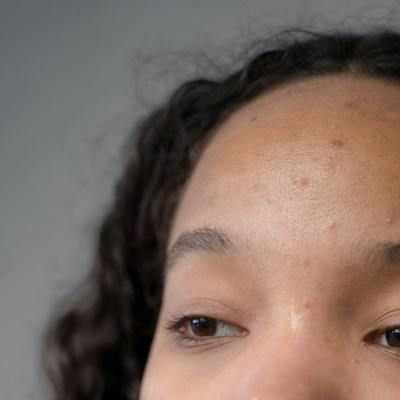Article
Why is Melanoma on the Rise?
Author(s):
Despite better screening and better reporting, melanoma rates are on the rise in the United States. According to a study published in the January issue of the Journal of Investigative Dermatology, new cases of skin cancer melanoma increased by 3.1% annually from 1992-2004.
Journal of Investigative Dermatology
Despite better screening and better reporting, melanoma rates are on the rise in the United States. According to a study published in the January issue of the , new cases of skin cancer melanoma increased by 3.1% annually from 1992-2004. Overall, the rate of melanoma doubled across all socioeconomic groups. Lee Cranmer, MD, PhD, a medical oncologist at the Arizona Cancer Center, is not surprised by the data.
“Back in 1935, developing melanoma at a point in someone’s life was rare—about a 1 in 1500 risk,” Dr. Cranmer said. “Presently in the United States, the risk is about 1 in 55. That’s an exponential increase in the risk.” Dr. Cranmer said the rates are even higher in Australia, where 1 in 23 people will develop melanoma. Recognizing the increasing prevalence is one thing, but identifying why the number of melanoma cases has jumped is not as clear-cut.
Higher Rates Due to Better Screening?
One theory behind the increase in melanoma rates is that physicians are detecting more cases through earlier screening. The study disputes the notion that better screening and reporting are behind the increase. Melody Eide, MD, a dermatologist with Henry Ford Hospital in Detroit, sides with the study authors. “If the increase was truly due to just screening, then we would expect to see all thin melanomas that we were finding,” Dr. Eide explained.
In early stages, the melanoma is localized to one place and is less than <1 mm deep. As the condition progresses, the tumor penetrates deeper into the skin and spreads or metastasizes. Regular screening would ensure that more melanomas are identified while still thin. “The fact that they’re finding them thicker, especially among poorer people who have less access to skin exam screening, suggests that melanoma incidents are truly growing,” Dr. Eide said.
Answer More Complex than UV Exposure
isn’t
From an epidemiological standpoint, Dr. Cranmer said all signs point to some aspect of ultraviolet light exposure as the primary cause of the increase in melanoma rates, coupled with a change in behavior. He pointed to the occupational and recreational sun exposure people get today versus people’s exposure 30 to 40 years ago. “If you took pictures of the beach in the 1950s there wasn’t much skin exposed…now, it’s a question of what skin exposed,” he said.
The tanning bed has come in for its own share of blame. Darrell Rigel, MD, clinical professor of dermatology at NYU Medical School, said there has been a marked increase in melanoma among women in their late 20s and early 30s. What distinguishes the behavior among members of this demographic from those in other demographics is their use of tanning beds. Dr. Rigel said melanoma is the most common cancer seen in women ages 25 to 29 years. “With a lot of these women, you see melanomas on areas where the sun doesn’t typically shine, but where the UV shines in the tanning beds.”
Dr. Cranmer acknowledged increased ultraviolet exposure was the simple answer, and the real answer is likely more complex. To illustrate, he explained that individuals who have a high level of the skin pigment melanin clearly are protected from developing melanoma in sun-exposed areas. This typically includes people whose ethnic origins are from tropical areas. The paradox, according to Dr. Cranmer, is that “they do develop melanoma, but they tend to develop it in non—sun-exposed surfaces, like the palms and soles of their hands.” This suggests something besides ultraviolet exposure is at work.
New Screening System Would Augment ABCDE Method
Dermatologists traditionally have diagnosed melanoma visually, using the age-old ABCDE method—Asymmetry, Border irregularity, Color variation, Diameter >6 mm, and Evolving. The problem with this technique, said Dr. Cranmer, is that it does not help identify lesions at the earliest stages of development. “But it’s the best we’ve got right now,” he said.
If Electo-Optical Sciences (EOS) gets its wish, dermatologists will soon get an upgrade in the way they evaluate patients for skin cancer. EOS is planning to file a Pre-Market Approval application with the US Food and Drug Administration for MelaFind, a noninvasive, point-of-care instrument that assists in the early detection of melanoma. In a recent study, MelaFind detected 125 out of 127 very early stage melanomas. Almost half were melanoma in situ, the most curable form of melanoma yet the most difficult to detect.
“What most of us are excited about is that MelaFind is detecting melanomas so early, earlier than expert eyes can do reliably,” said Joseph V. Gulfo, MD, president and CEO of EOS. Dr. Rigel agreed. “This should lead to improved biopsy efficiency and help reduce the number of unnecessary biopsies, which can be painful and scarring,” he said.
Of course, that does not mean clinicians should discard the ABCDE criteria. The ABCDE is a useful teaching tool, especially for inexperienced dermatologists, Dr. Cranmer said. While a system like MelaFind can augment visual inspection, visual inspection is still critical, said Dr. Cranmer. He added that the ‘E’ or Evolving aspect of ABCDE is especially important. “If something changes appreciably and you notice it, that’s the most important thing,” he said. He also offered his unique addition to the ABCDE: F, for family or friend. “If somebody tells you that you ought to have [a blemish] looked at,” he explained, “that’s probably pretty good advice.”
Ed Rabinowitz is a veteran healthcare writer and reporter. He welcomes comments at edwardr@frontiernet.net.





